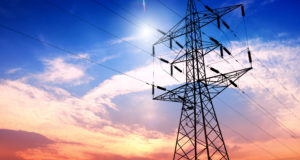Maybe you’ve heard this before, but then again maybe you haven’t: it is actually possible to generate usable electrical energy by riding a bicycle.
Not by simply riding it out in the street, of course, but indoors, suspended on a stand and connected to a specially-constructed generator designed to harvest the hidden power of spinning bike pedals. It really doesn’t matter who is doing the pedaling – dad, mom, grandpa, grandma, your kids, your lazy brother-in-law, or any other visiting relatives who need to do something to earn their keep; as long as those pedals are spinning and the bicycle generator is hooked up to a battery that can collect and store the electrical power produced, you will be in business.
Off-the-gridders are always on the lookout for any possible source of down-home power, so naturally bicycle generators have attracted the interest of many. But before we start recommending that anyone invest their time, money, and leg power in a bike generator, we first need to take a much closer look at this technology to see what it is actually capable of doing. Once we have uncovered and revealed all the good news and the bad news about bicycle generators, then and only then will you be informed enough to decide whether or not you would like to include a bicycle generator in your growing collection of off-the-grid energy-producing devices.
As William Shakespeare would have said, if he were here today: to buy or not to buy, that is the question. We don’t know if Shakespeare was thinking about bicycle generators when he first wrote those lines, but if he wasn’t, he probably should have been.
First The Good News…
If we were going to organize a debate about bicycle generators, those taking the “pro” side would have plenty of good reasons to sing the praises of this innovative and wonderfully simple technology:
Good News Headline #1: Bicycle generators can help the whole family stay fit and healthy
Riding a stationary bicycle is one of the best types of exercise anyone can perform. Aerobically challenging, low-impact, and suitable for all ages, spinning a pair of pedals as fast as you can for as long as you can will help you lose weight while you are keeping your heart healthy, leaving you physically prepared to handle any difficult personal or societal challenges you may face in the years ahead. And if you are already into bicycling, why not kill two birds with one stone and put your hobby to good use by hooking your bike up to a generator, so you can start producing electrical power as a supplement to your normal road work?
Good News Headline #2: Bicycle generators can charge batteries or power electric devices directly
It is true—anyone can pedal a bike and charge a battery. But your possibilities are not limited to just that, for it is also possible to connect a bike generator directly to any appliance or device that runs on electricity and/or is capable of storing a charge. If you are in decent-to-good shape, you should be able to pedal fast enough to produce a relatively continuous output in the 100-150 watt range, which will be enough to power or charge such items as a fluorescent bulb or a computer monitor, or a charger for a cell phone, laptop computer, or electric razor. On the other hand, if you can keep pedaling for up to an hour, you could potentially add 100 watt-hours of power or more to your battery, which could then be used to run just about any device that requires electricity. And if everyone in the family takes a daily turn in the saddle, obviously the amount of energy produced and saved could add up even more.
Good News Headline #3: Bicycle generators can produce extra energy in the winter, when you need it the most
Solar power is the popular choice for many off-the-gridders these days. But in the winter time when the sun is low and the days short, the available supplies may not always be adequate to meet all of a family’s needs. In such unfortunate circumstances, anything that could add a little extra input would be appreciated, and even though bicycle generators are not mega-producers by any means, they can really help out in situations where every little bit counts.
Good News Headline #4: Bicycle generators can function as effective back-up units
What will you do if the power goes out? Whether you are still on the grid or off, short- or long-term power failures are always possible, and when you are facing a situation like this, it makes sense to have back-up power sources that are both reliable and dependable. Bicycle generators may not be able to match either the grid or a solar panel array in productivity, but they can still provide important service during a time of crisis. If you are using LEDs, for example, you could keep your home bathed in light for hours with just a few minutes of determined pedaling. In such a predicament, you would no doubt have to ration energy anyway, so a bicycle generator’s power-producing limitations would not be as much of an impediment as would normally be the case.
Good News Headline #5: Bicycle generators would make ideal additions to fallout shelters, safe houses, storm cellars, etc.
Temporary power failures are a legitimate threat, to be sure. But what happens if catastrophe strikes, and the whole societal kit and caboodle suddenly comes falling down around our ears? Many believe this is not so much a possibility as it is an inevitability, and if the worst happens and you and your family must attempt to survive when chaos is raging all about you, a small-scale, power-generating technology that can help you make it through the worst times imaginable could be worth its weight in platinum.
What It Takes To Create A Safe, Self-Sufficient, Off-The-Grid Lifestyle Using Solar Power!
Good News Headline #6: Bicycle generators will teach the kids valuable lessons about the importance of self-sufficiency and a good work ethic
If we expect our children to be able to survive the trials and tribulations that are coming, we need to teach them how to fend for themselves in all circumstances. In support of this necessity, it should be pointed out that bicycle generators are about as far from a technology of convenience as you will ever hope to find, as they require you to work for everything you get. If we ask our children to use one to supply their own power so they can run their computers, light their rooms, or charge their cell phones, it will help them learn how to be self-sufficient and to take responsibility for their own actions. And besides all this, bicycle generators can be used to create some fascinating science projects, and any child who knows how to use one is likely to make quite an impression at his school’s science fairs.
Good News Headline #7: Buying a bicycle generator might be a smart, but building your own might be even smarter
Shakespeare didn’t realize it, but you don’t necessarily have to buy a bicycle generator even if you decide you want one—with a little research, you can learn how to build one all on your own. There are a boatload of DIY plans available out there now that can show you how to do it; some require the use of regular bicycles, but others will give you the lowdown on how to build spinning machines from scratch using spare parts you could find in your garage or storage shed. Not only can you save a lot of money this way, but some of the machines that are built from the ground up will actually outperform generators that require the use of a traditional road bike.
…And Now The Bad News
There are a lot of enthusiastic boosters out there who will tell you that bicycle generators are so fantastic they make sliced bread look like it’s a snooze fest in comparison. But as is often the case with many so-called “green” technologies, the benefits of bicycle generators have been greatly exaggerated by those who believe anything that is good for the environment is automatically better than any other alternative available anywhere else in the universe.
This is not a bubble we pop with pleasure, but pop it we must. Unfortunately, the drawbacks of bicycle generators are significant, and they must be acknowledged for the sake of accuracy and in the spirit of full disclosure:
Bad News Headline #1: Bicycle generators ain’t exactly cheap
A new or refurbished bicycle generator and its supporting equipment could cost you a few hundred dollars, if you want to get something that is highly-efficient and durable. While it is true you could make your own pedal-powered generator at home using scrap or recycled parts for a lot less—maybe $100-$200, if you are clever and industrious enough—this may not be an option for most, who simply would not have the time or expertise needed to build something cheap (but good) on their own.
Bad News Headline #2: Bicycle generators don’t produce much power
Hyperbole aside, a bicycle generator is likely to produce no more than one or two cents worth of power for each hour that it is put into use. For satisfying the occasional need here or there this may be okay, but anyone who expects to meet a considerable share of their electrical demand by using a bicycle generator is living in a dream world—unless maybe they come from a family of 48, with everyone taking a half-hour shift in the saddle each day.
Bad News Headline #3: Bicycle generators don’t produce a lot of bang for the buck
In addition to the initial investment, you will also have to buy batteries if you expect to store the energy you produce. But even if you manage to pedal fast enough to reach the 100-watt production level (which is not easy for many), you would have to ride your bicycle generator for more than 300 hours to store enough energy to pay for the cost of the battery alone.
150 Ways to Cut Your Energy Bills Now…
Bad News Headline #4: Bicycle generators can wear out the tires on a bike
Spinning a bicycle repeatedly on a sidewall or drum generator, which puts the unit in contact with the sides or top of the bicycle tire respectively, will cause significant wear and tear on the tires. This may force you to replace them every six months or so if your bike is used exclusively on the generator, or more often if it is being ridden out on the road as well. A hub generator (a third type of bicycle generator) avoids the friction problem by attaching the rotating motor directly to the revolving wheel, but these more advanced units naturally cost more than other types.
Bad News Headline #5: When bicycle generators are connected directly to appliances and electric devices, it can be difficult to stay up to speed
Putting granny or your ten-year-old on the bike is no longer an option if you are not using a battery to store the electricity you produce with the generator. If you are pedaling with the intention to power something in real time, through a direct connection, your situation may be similar to that of the Roman galley slave, who had to row harder and harder in order to avoid the whip and keep up with the demands of his task master. Only in this case, the pain will come from the burning in your legs and it will be the electric appliance that is pushing you to pedal faster and faster; and if you fail to do so, the appliance and the inverter that converts the generator’s direct current into alternating current may cut out repeatedly, meaning all of your vigorous spinning efforts will have been in vain.
Bad News Headline #6: Bicycle generators are shockingly inefficient
While they can in fact do useful work, it would be more difficult to find a type of alternative energy that operates less efficiently than the bicycle generator. When you combine the energy that is wasted in the battery, in the generator, in the inverter, through friction in drum and sidewall units, and in the voltage regulator, which prevents electric devices from being overloaded if a bicycle generator produces too much power, anywhere from 50-70% of all the energy that should be produced by the spinning of the pedals in one of these units is actually frittered away into the ether. Of course some of this loss can be reduced if a hub generator is used or a battery is not, but no matter how you spin it (no pun intended), a bicycle generator is still an inefficient device.
“To Buy Or Not To Buy”: The Final Decision
Weighing the good against the bad, the pro against the con, and the point against the counterpoint, we are forced to conclude that buying a bicycle generator would probably be a good investment for some and a poor one for others.
This may seem like a wishy-washy answer. But the potential value of a bicycle generator will all depend on how much a person prizes efficiency. If efficiency is what the game is all about for you, then you will undoubtedly be able to find better ways to spend your hard-earned cash than to sink it into an energy-producing device that will never even come close to paying for itself. But on the other hand, if self-sufficiency, good health, and personal security transcend bottom line considerations in your universe, then a bicycle generator might be just the ticket.
So to purchase or not to purchase? In the end, this is a question that you must answer for yourself. Even if Shakespeare himself were here today, he would not be able to help you make your final decision.
 Off The Grid News Better Ideas For Off The Grid Living
Off The Grid News Better Ideas For Off The Grid Living





